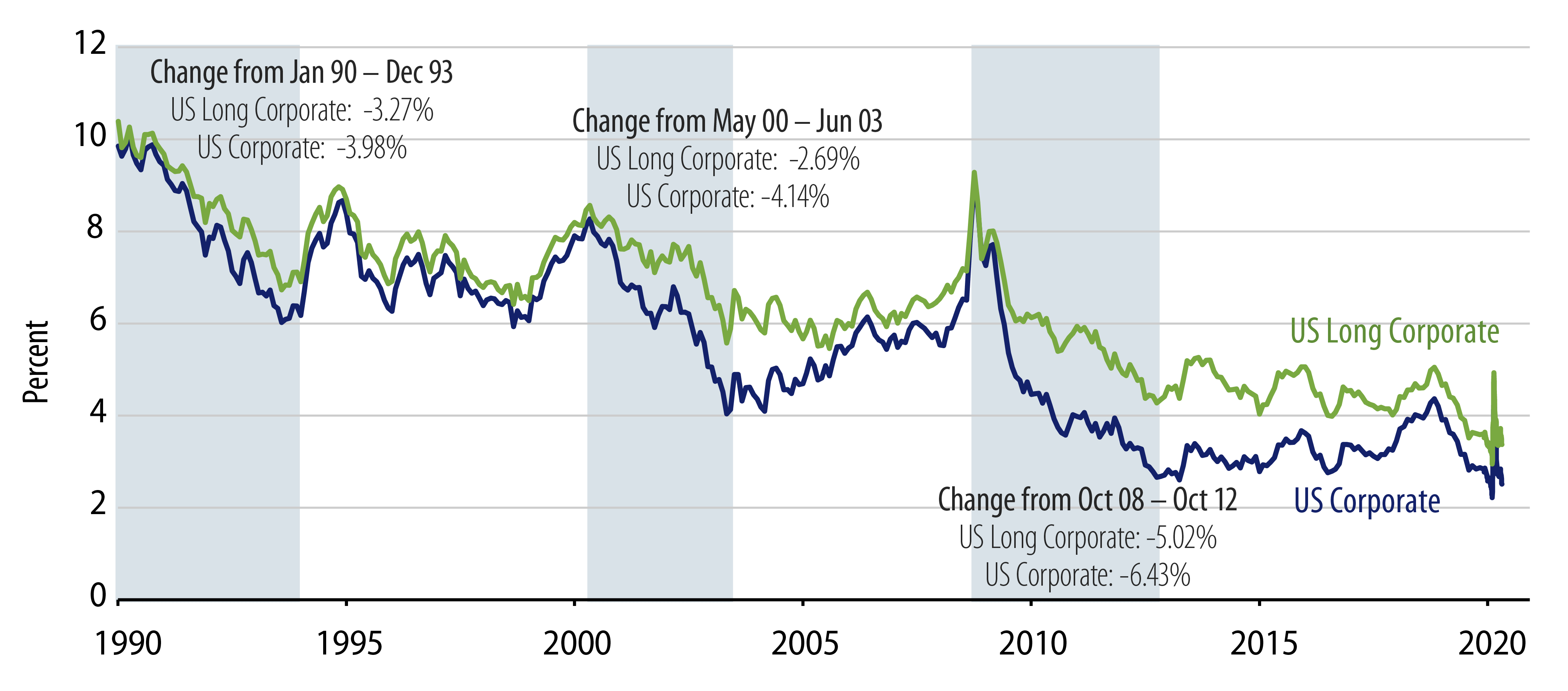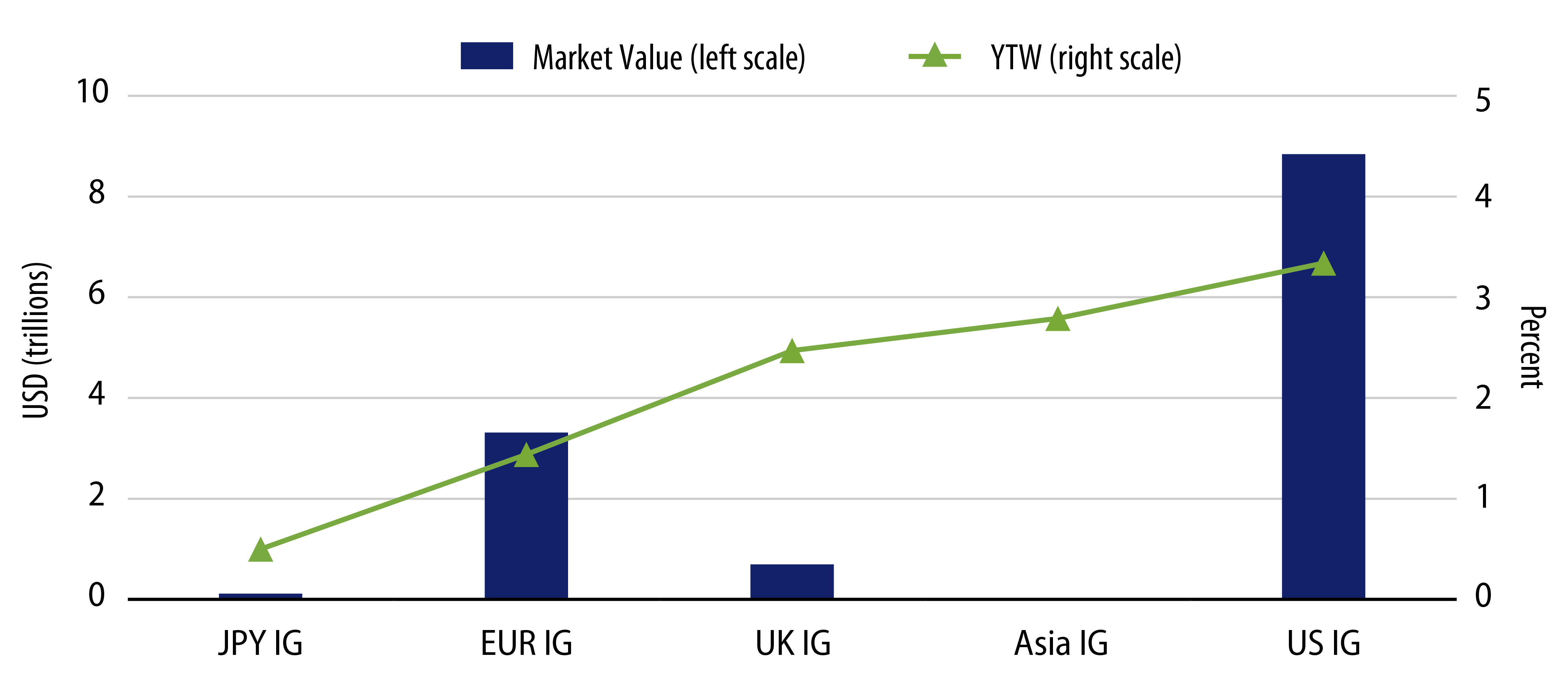KEY TAKEAWAYS
- The COVID-19 pandemic has produced so much market uncertainty that Fed Chair Powell has said on more than one occasion that forecasts in this environment are practically useless.
- Getting investment-grade credit yields down is essential to ensuring the eventual transition to an economic recovery.
- Investment-grade bond spreads have come down since their peak in March, but relative to implied default expectations we believe they still represent exceptional value.
”Knightian uncertainty” is named after the University of Chicago economist Frank Knight who distinguished risk and uncertainty. Knightian uncertainty is a lack of any quantifiable knowledge about some possible occurrence as opposed to the presence of quantifiable risk. The concept acknowledges some fundamental degree of ignorance, a limit to knowledge and an essential unpredictability of future events.
Today’s medical, behavioral, economic and market environments epitomize Knightian uncertainty. We have never before experienced anything like the COVID-19 pandemic, or what is perhaps the greatest experiment in world economic history: the voluntary shutting down of massive parts of the global economy with the hope/plan of restarting after some temporary period of time. As Federal Reserve (Fed) Chair Jerome Powell has said on more than one occasion, forecasts in this environment are practically useless. As investors, how do we go about advancing through this fog? We think the key may be to lean on assets that have robust characteristics, and therefore might best weather even a long and protracted period of uncertainty. They must also be able to generate sufficient returns if a better or improving environment comes into focus. We would argue that investment-grade (IG) corporate bonds fit this bill. The psychology of fear and uncertainty has driven fixed-income risk-based assets to distressed levels. Avoiding risk while waiting for clarity may seem reasonable, but a quick recovery would leave you under-invested. Investing in higher risk sectors could bring substantial returns in the event of a near-term recovery, but may not survive a period of prolonged economic weakness. This is the inherent uncertainty in today’s challenge—either a quick or prolonged recovery is possible.
The overarching goal of policy is to protect and maintain the key elements of the economic apparatus for the potential restart. In the US, the primary focus is on the IG credit market, which is represented by the premier corporations in America. Their solvency and performance ability are absolutely necessary if the economy is to come back. The CARES Act has provided the Fed with the ability to buy corporate bonds directly for the first time in its history. Without parsing all the specifics of the Act, the key takeaway is that the ability to actively support the IG credit market has been initiated. Many doubt whether the Fed will use this facility to continually support the market, as the European Central Bank, Bank of England and Bank of Japan have routinely done. There is also a thought that this program should be viewed only as a backstop. We, however, suspect that the Fed will use this authorization strongly in order to improve financial conditions.
Getting IG credit yields down is essential to ensuring the eventual transition to an economic recovery. IG credit yields have come down in advance of every US economic recovery. Exhibit 1 shows the IG yield history just since 1990, along with descriptions of the yield declines—for corporate bonds generally and long corporates specifically—in every downturn since 1990.

Note in the graph that yields not only fell from the recession peak, but also were meaningfully lower than the levels that prevailed before the recession stress commenced. Additionally, they remained lower well after the recovery started. Lowering corporate borrowing costs is a paramount policy objective. Despite today’s economic uncertainty, this goal now has the benefit of an additional powerful Fed capability.
Most important, though, is valuation and investment worthiness under stress. IG spreads have come down from their March peak, but relative to implied default expectations they still represent exceptional value. Currently, IG corporate bonds are priced for 14.33% cumulative defaults (as of May 22, 2020). The peak in cumulative IG defaults was only 2.5% in the aftermath of the global financial crisis. The degree of widespread corporate defaults necessary to justify today’s spread level is multiples of the worst experience in post-war US history. These valuations are also compelling from a global relative value basis. Exhibit 2 shows the yields of IG corporate bonds globally. Note that the US has the highest yields, the largest and most liquid market, and arguably the most financial resources to withstand the pandemic.

As little as three months ago (a lifetime in coronavirus time) investors were accumulating US corporate debt—both public and private—as the need for yield was so difficult to satisfy. Today, it is a reasonable prospect that global central banks will have zero or negative policy rates for years. The initial fear and resulting flight to safety that elevated US Treasuries and depressed corporate bonds are understandable. But over time, as investors start the process of portfolio construction with an eye to an eventual recovery, the need for “safe” yield will once again become a priority. Many fixed-income spread sectors will benefit. But IG bonds have the combination of valuation, credit resiliency over a long period of uncertainty and an explicit policy commitment.
The pandemic-related fear and uncertainty are today’s realities. But conditions can change—both for the better or the worse. Building portfolios that can withstand meaningful and prolonged economic adversity is crucial. But likewise, providing investors with the economic returns that might no longer be achievable once a recovery becomes clearly evident is also important. We believe that IG corporate bonds should constitute a cornerstone investment in any fixed-income portfolio.



